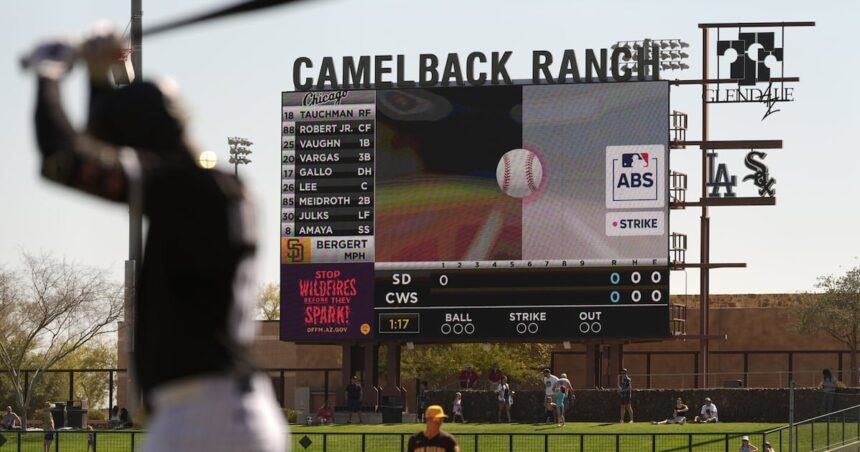The crack of the bat, the roar of the crowd, and now, the algorithmic precision of artificial intelligence calling balls and strikes. When the 2025 MLB All-Star Game unfolds next week in Atlanta, baseball will witness a pivotal moment in its storied history as automated strike zones make their All-Star debut – potentially setting the stage for regular-season implementation as soon as 2026.
This isn’t merely a technological novelty; it’s the culmination of baseball’s gradual evolution toward embracing innovation while struggling to preserve its human elements. The automated ball-strike system (ABS) represents perhaps the most significant officiating change in professional sports since instant replay, and its implications extend far beyond just getting calls right.
“Baseball has always been a game of inches, but now those inches will be measured by sensors, not subjective human judgment,” explains sports technology analyst Marie Clermont. “This fundamentally alters the relationship between players, umpires, and the rulebook itself.”
The system, which has been extensively tested in the minor leagues since 2019, uses radar technology to create a three-dimensional strike zone tailored to each batter’s physical dimensions. When a pitch crosses the plate, the computer makes an instantaneous determination, which is then relayed to the home plate umpire via an earpiece.
What makes this particularly fascinating from a cultural perspective is how it reflects our broader societal shift toward algorithmic decision-making. As we increasingly delegate judgment calls to artificial intelligence in everything from hiring processes to criminal sentencing, baseball’s embrace of automated officiating feels almost inevitable – if not overdue.
The players’ reactions have been mixed. Pitchers who specialize in framing pitches at the corners – an art form that sometimes relied on fooling human umpires – have expressed concerns about their craft becoming obsolete. Meanwhile, batters who’ve felt victimized by inconsistent strike zones are largely embracing the change.
“There’s something profoundly human about arguing balls and strikes,” says former MLB catcher Jason Martinez. “Those heated exchanges between managers and umpires are part of baseball’s theater. We’re trading emotional authenticity for mathematical precision.”
The cultural impact extends beyond the diamond. Baseball has long served as America’s conservative institution – resistant to change and deeply connected to tradition. The robot umpire represents a capitulation to modernity that many purists find troubling. It’s telling that conversations around baseball’s future increasingly mirror broader societal debates about technology’s proper role in our lives.
Commissioner Rob Manfred has framed the initiative as necessary for baseball’s survival in an era of shortening attention spans. “The modern fan expects accuracy,” he stated in a press conference announcing the All-Star implementation. “This technology ensures every player gets a fair, consistent strike zone, regardless of reputation, game situation, or human error.”
Critics point out that baseball’s charm has always resided partly in its imperfections. The human element – including the occasional missed call – creates narrative tension and memorable controversies that become part of the sport’s folklore. Can an algorithm generate the kind of dramatic tension that makes sports compelling?
What’s particularly interesting is how this technological shift reflects baseball’s changing demographic reality. As the sport struggles to attract younger viewers, embracing technology represents an olive branch to a generation that expects digital integration in every aspect of life. The question remains whether robot umpires will attract new fans or alienate traditionalists.
The economic implications are substantial as well. Umpires’ unions have secured guarantees that human officials will remain behind the plate, but their role will fundamentally change from arbiters to technological intermediaries. This mirrors broader economic anxieties about automation replacing human judgment across industries.
As we witness this pivotal moment in baseball’s evolution, we’re really observing a microcosm of society’s larger technological transition. The strike zone – that invisible rectangle that has generated countless arguments – will now be defined by mathematical precision rather than human interpretation.
Will we gain more than we lose in this exchange? That question extends far beyond baseball diamonds and into every corner of our increasingly automated world.










